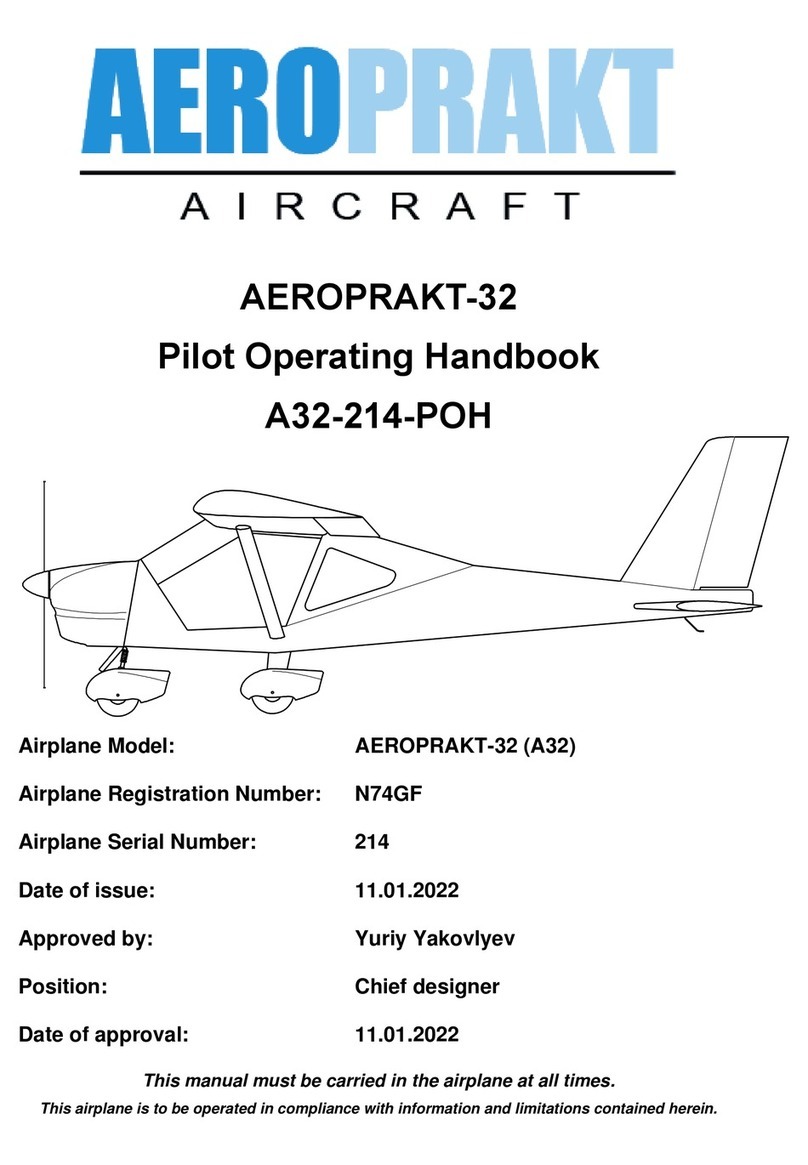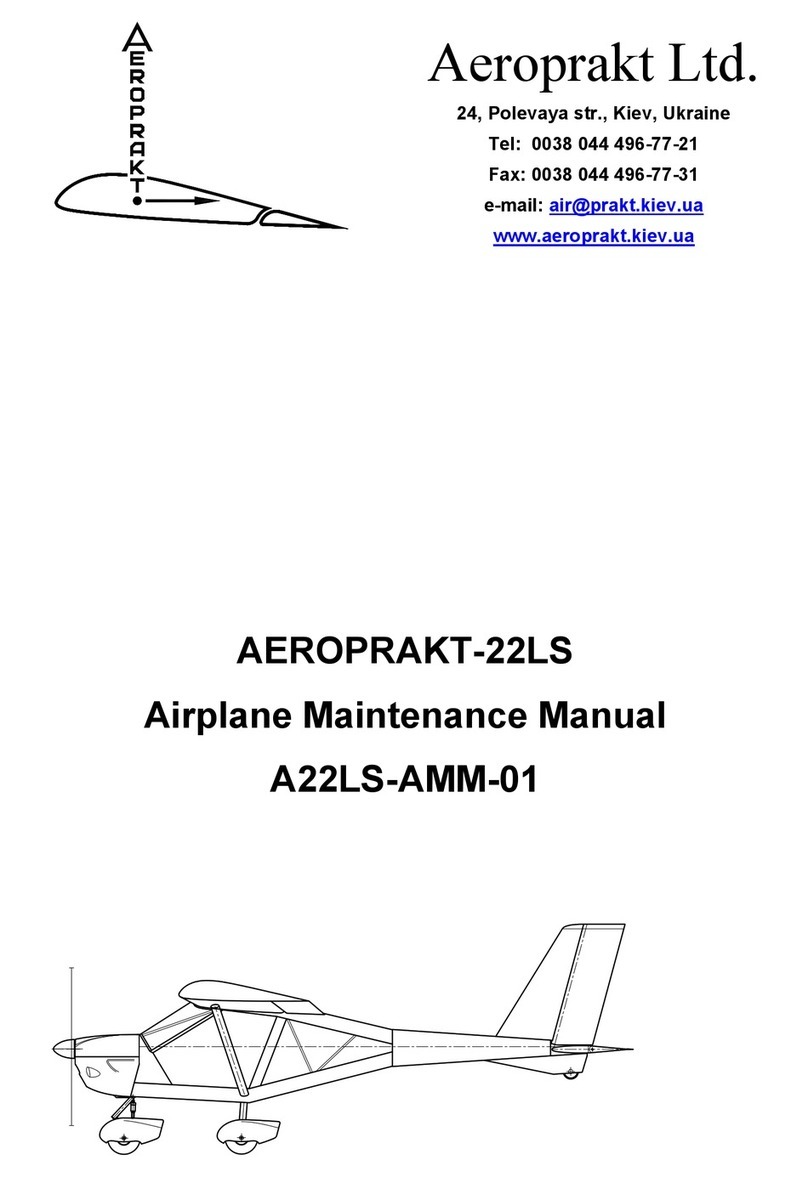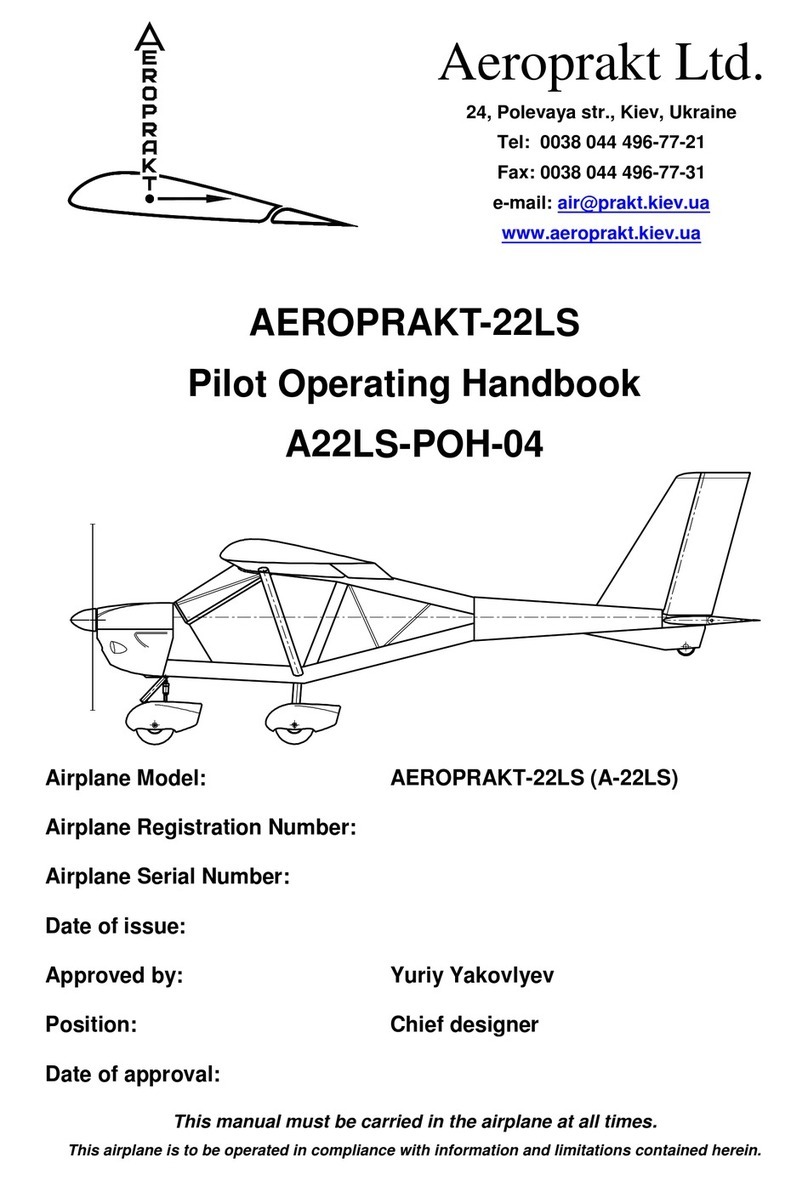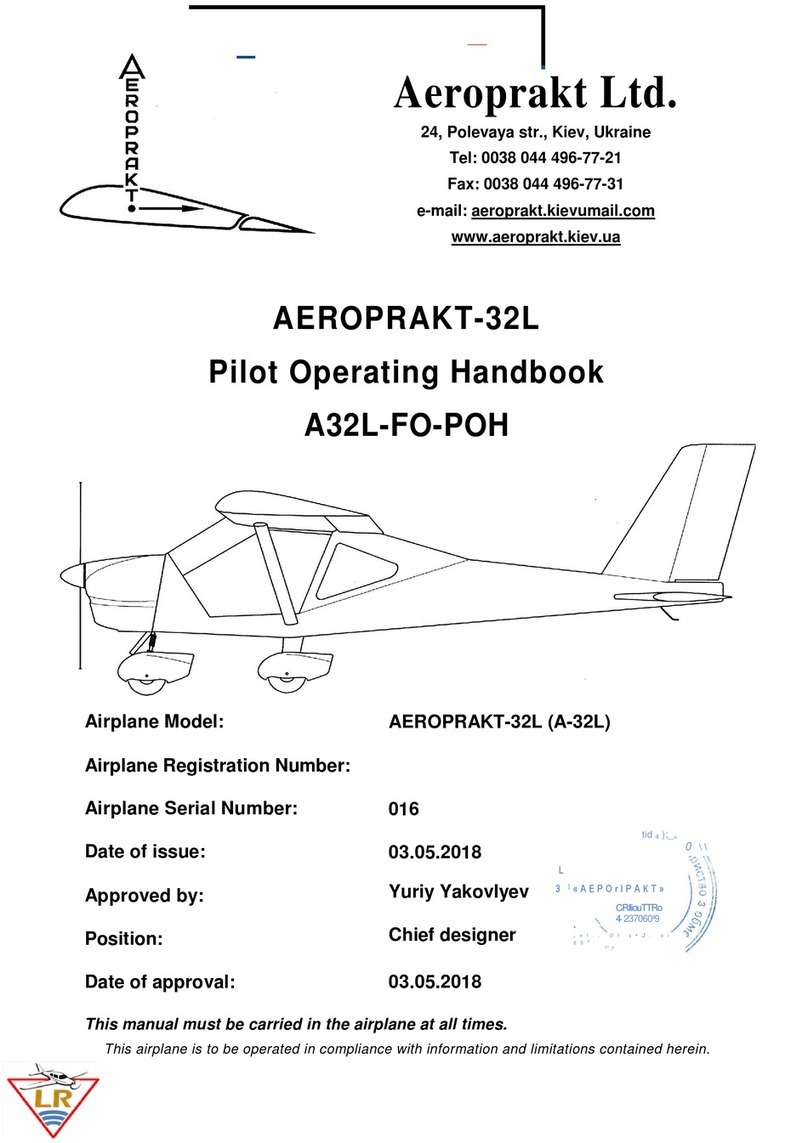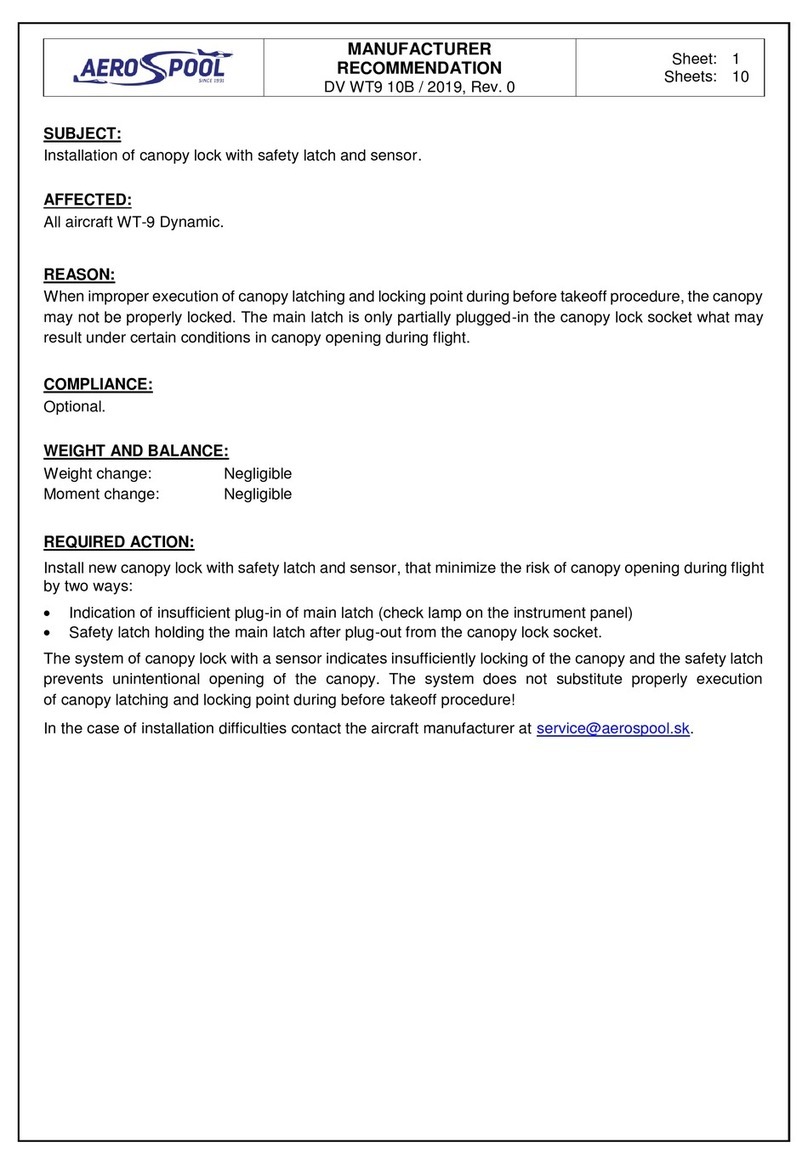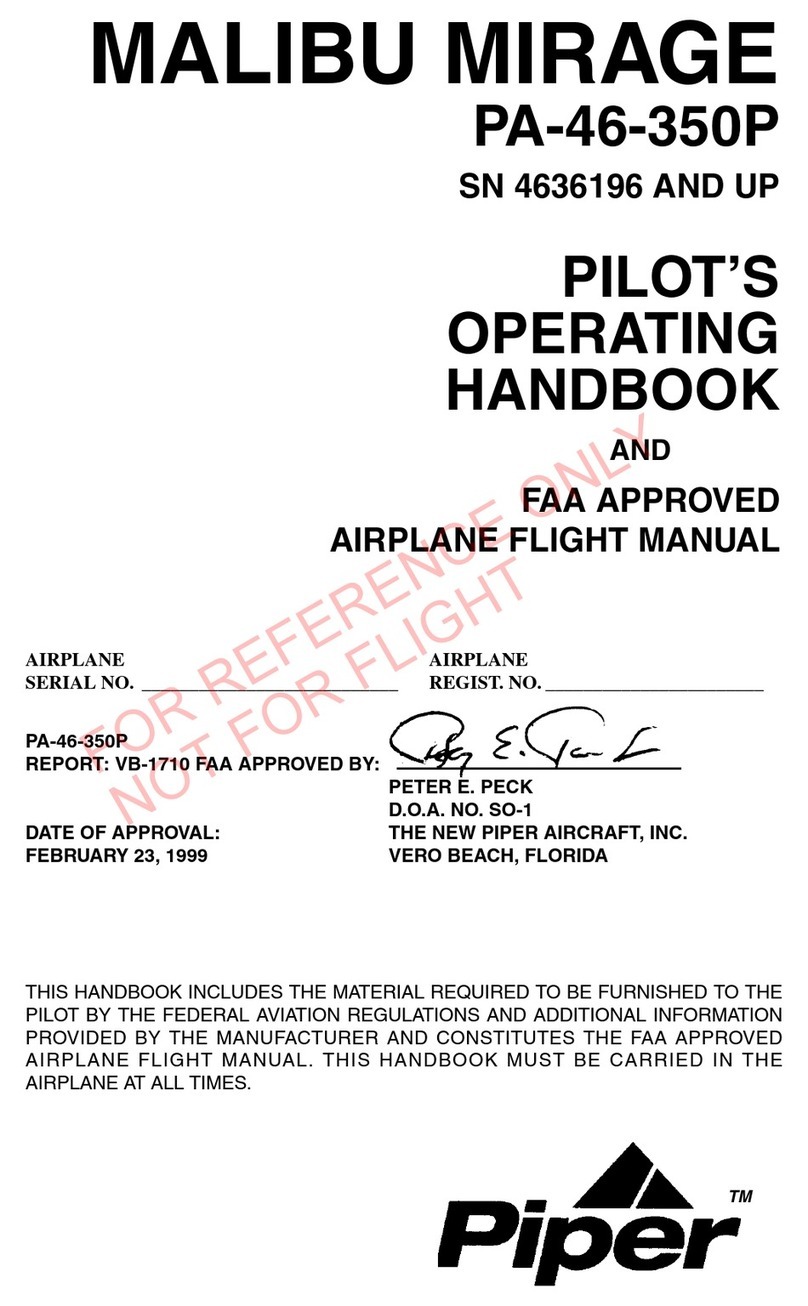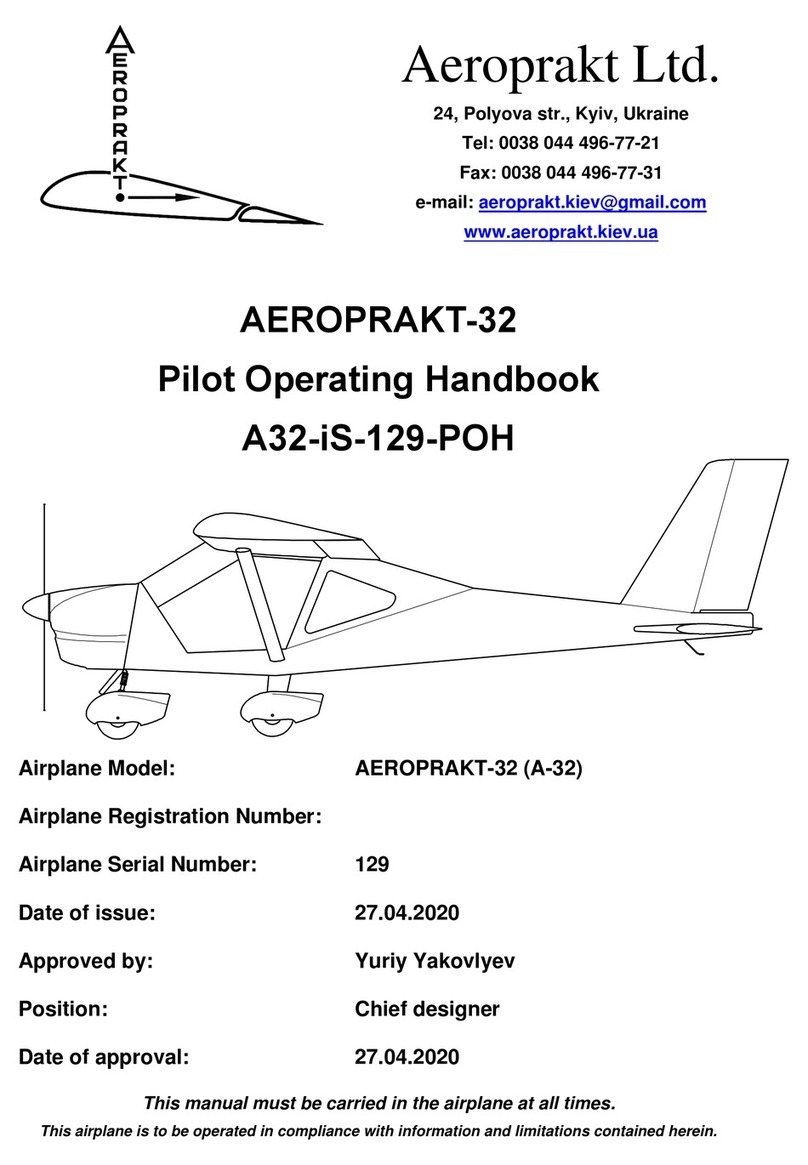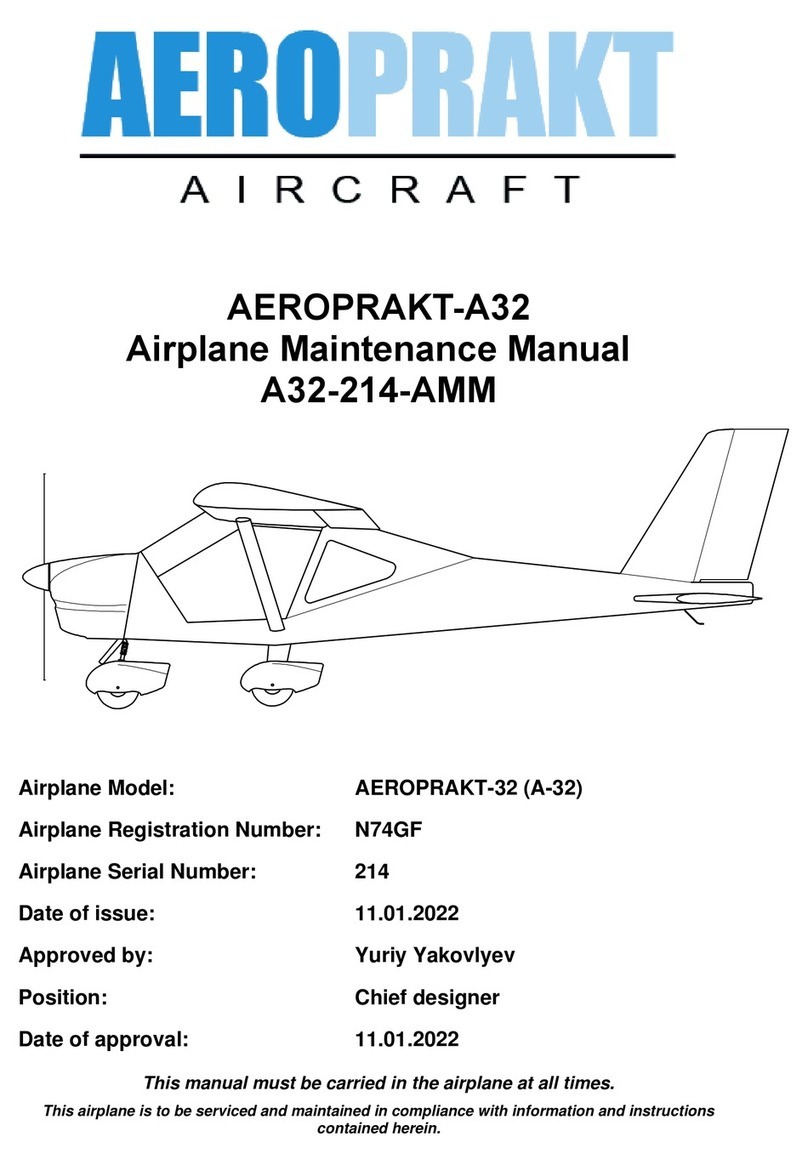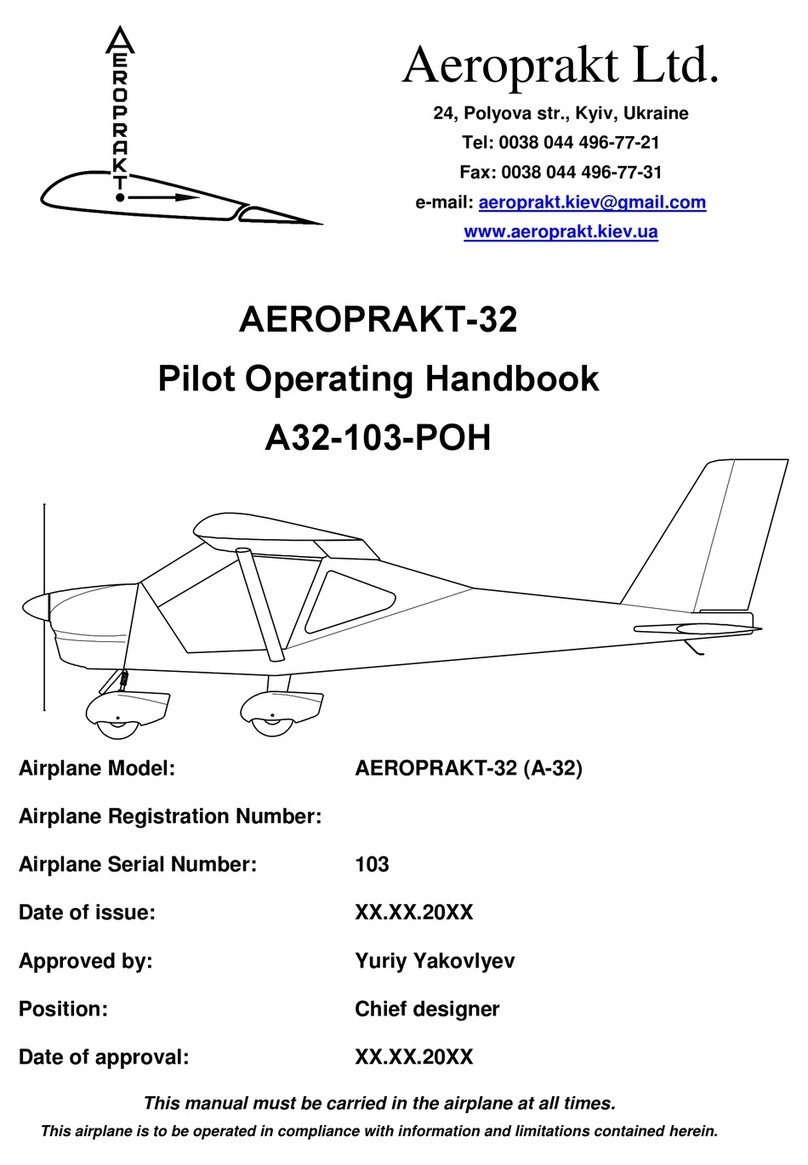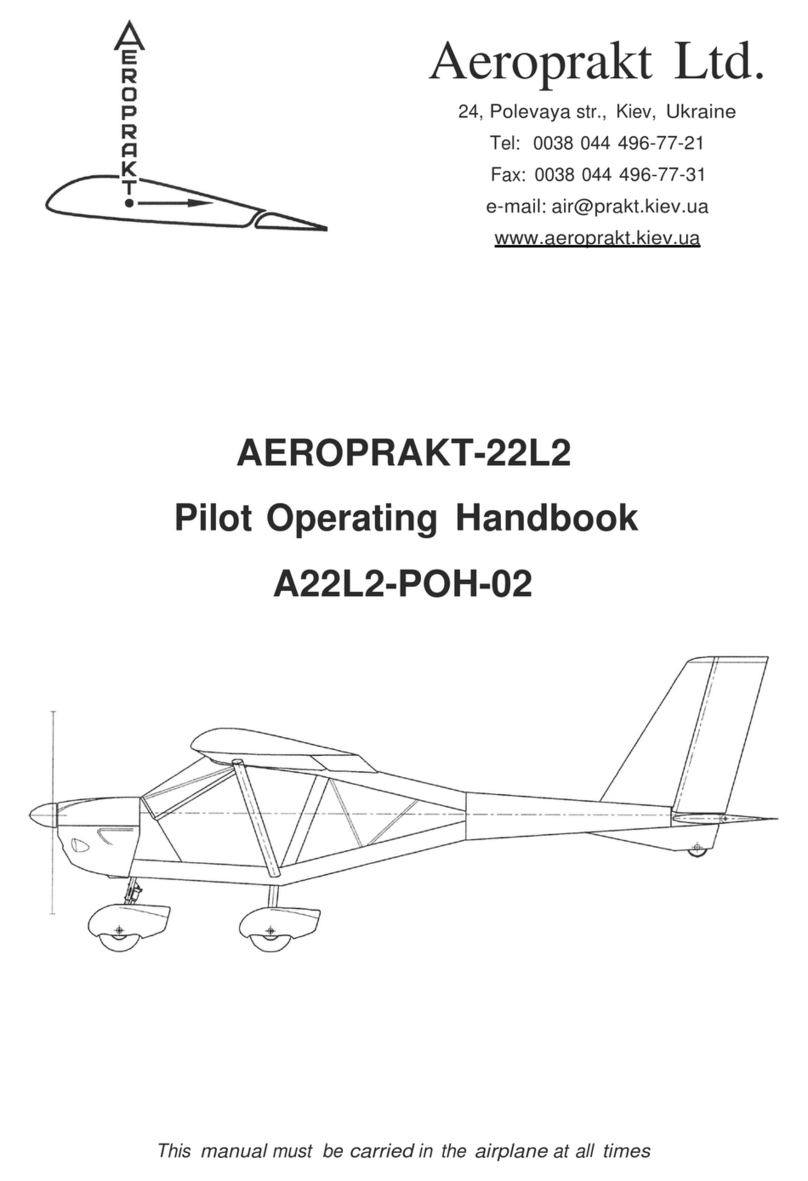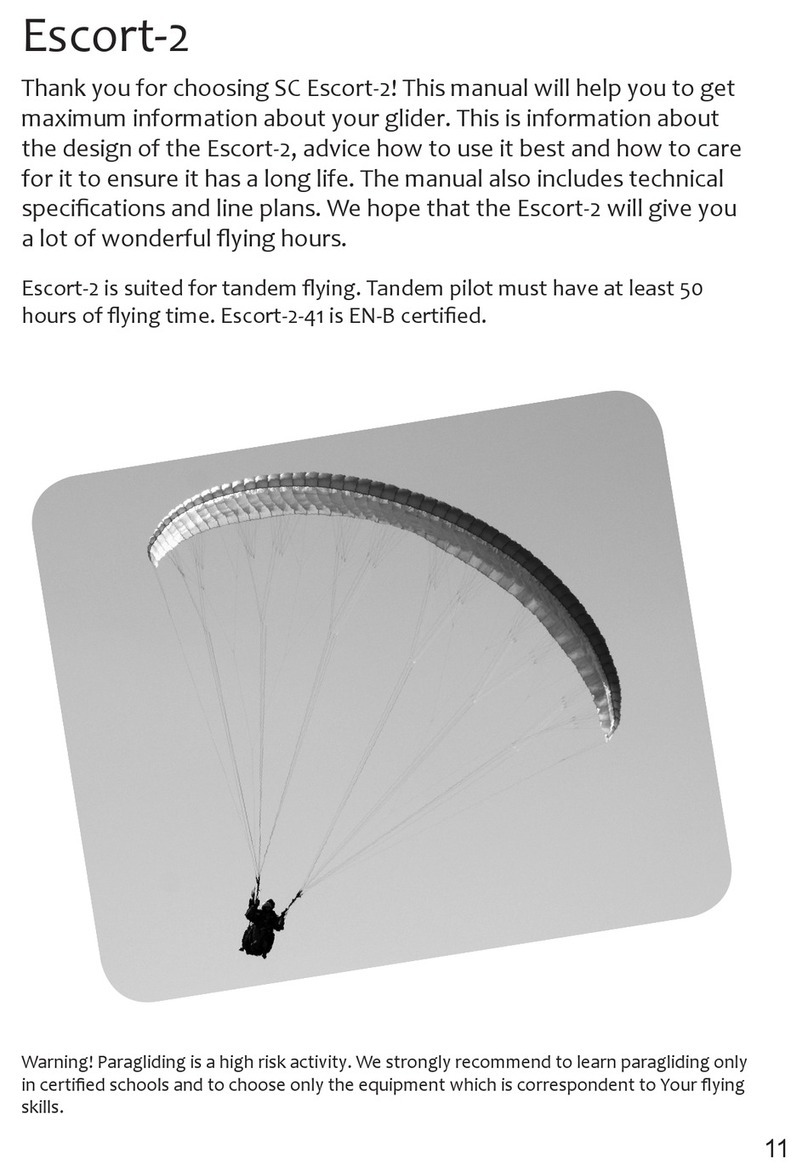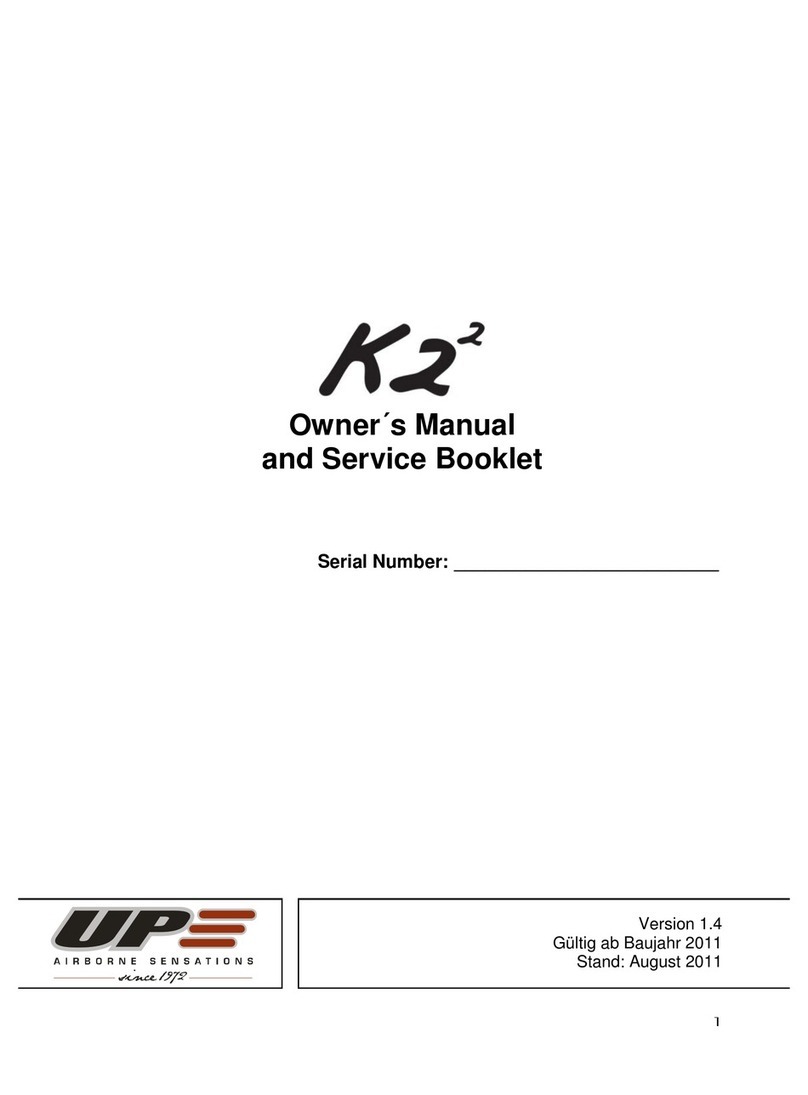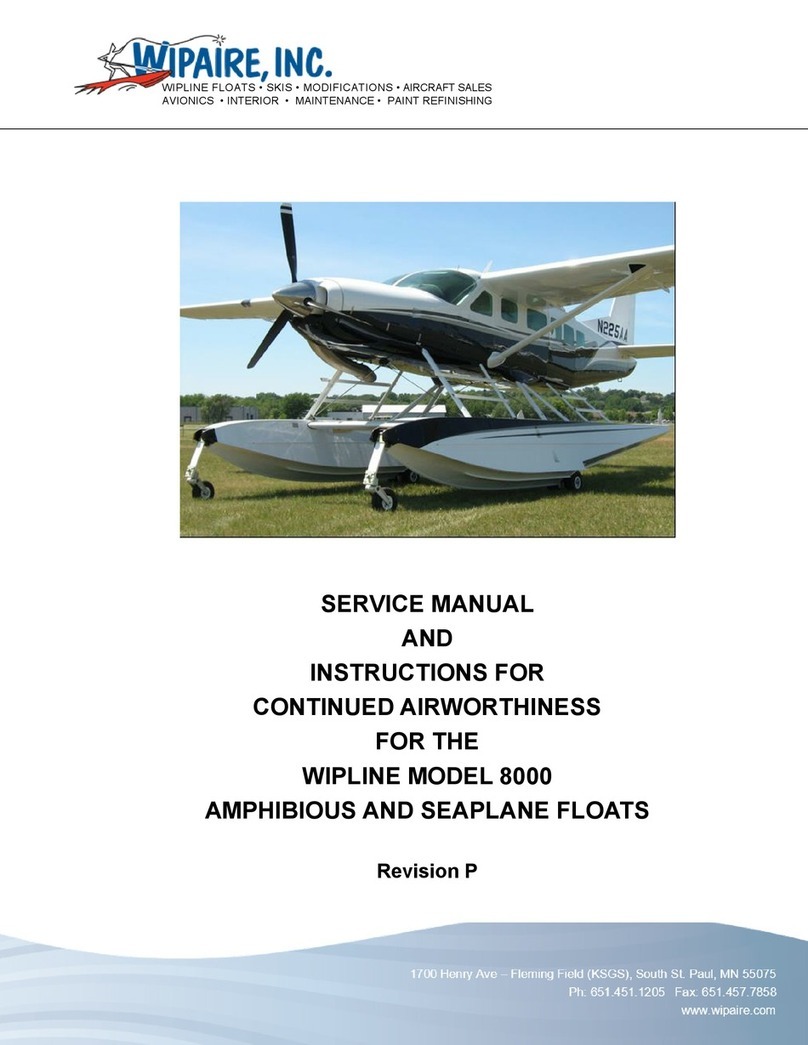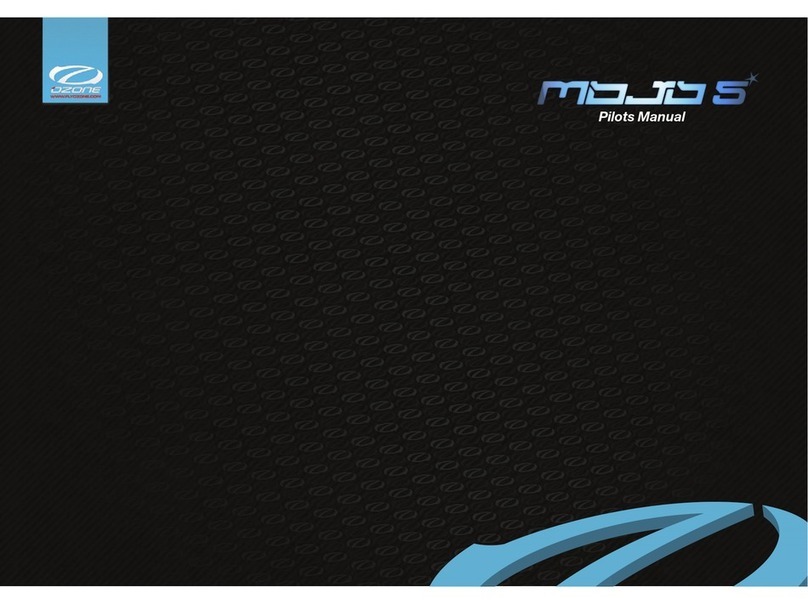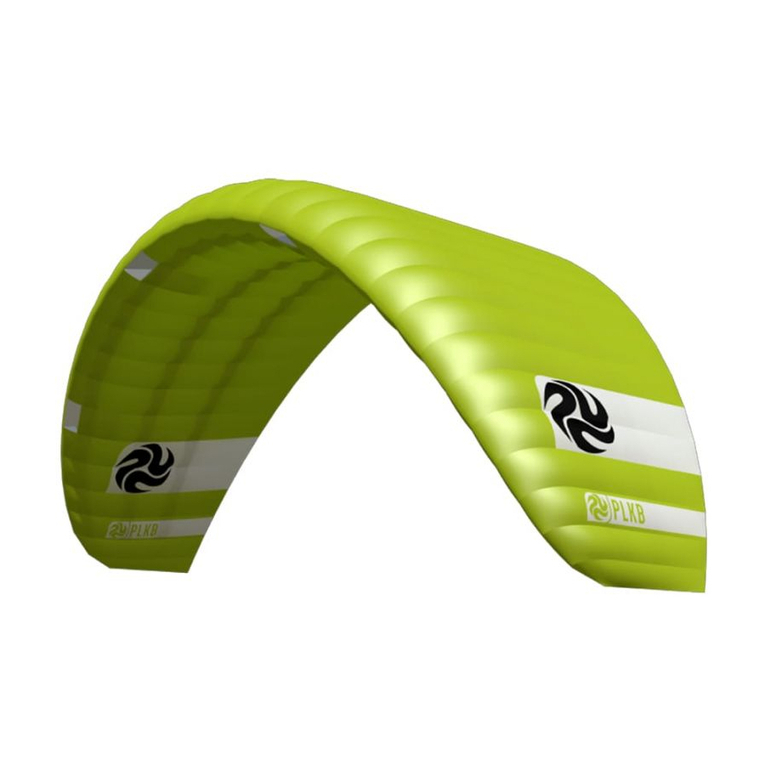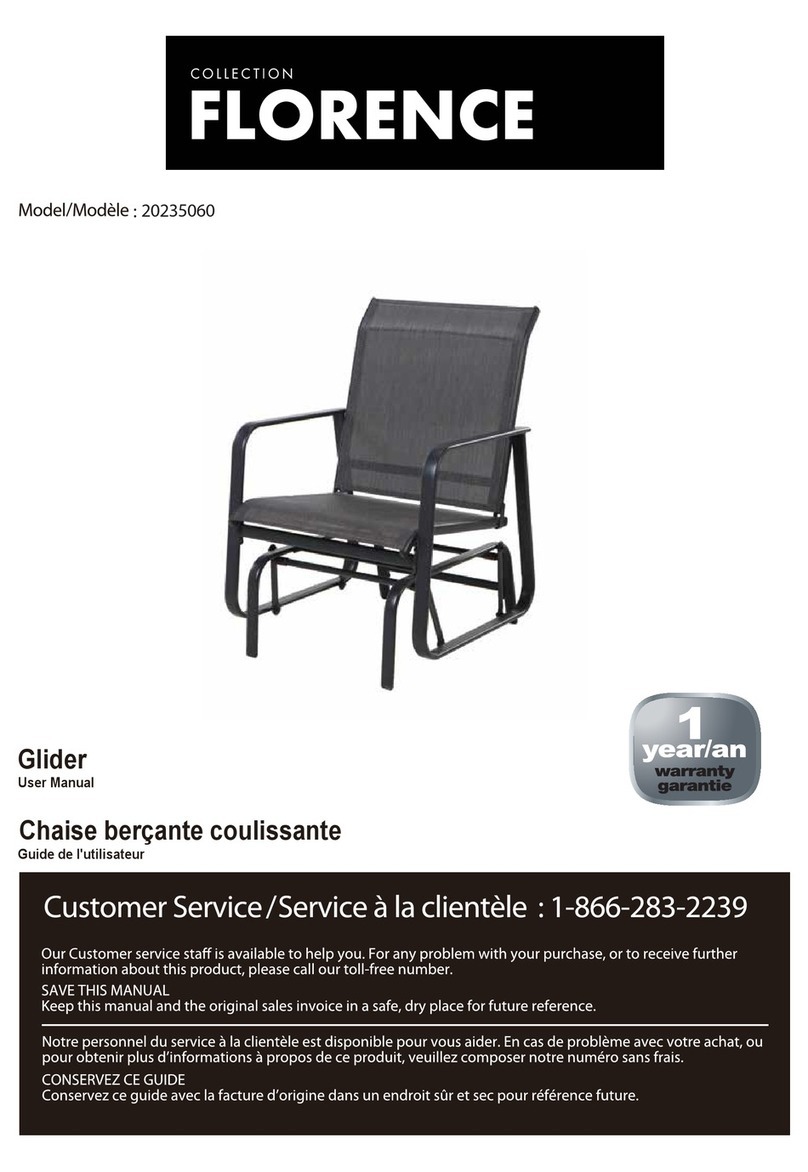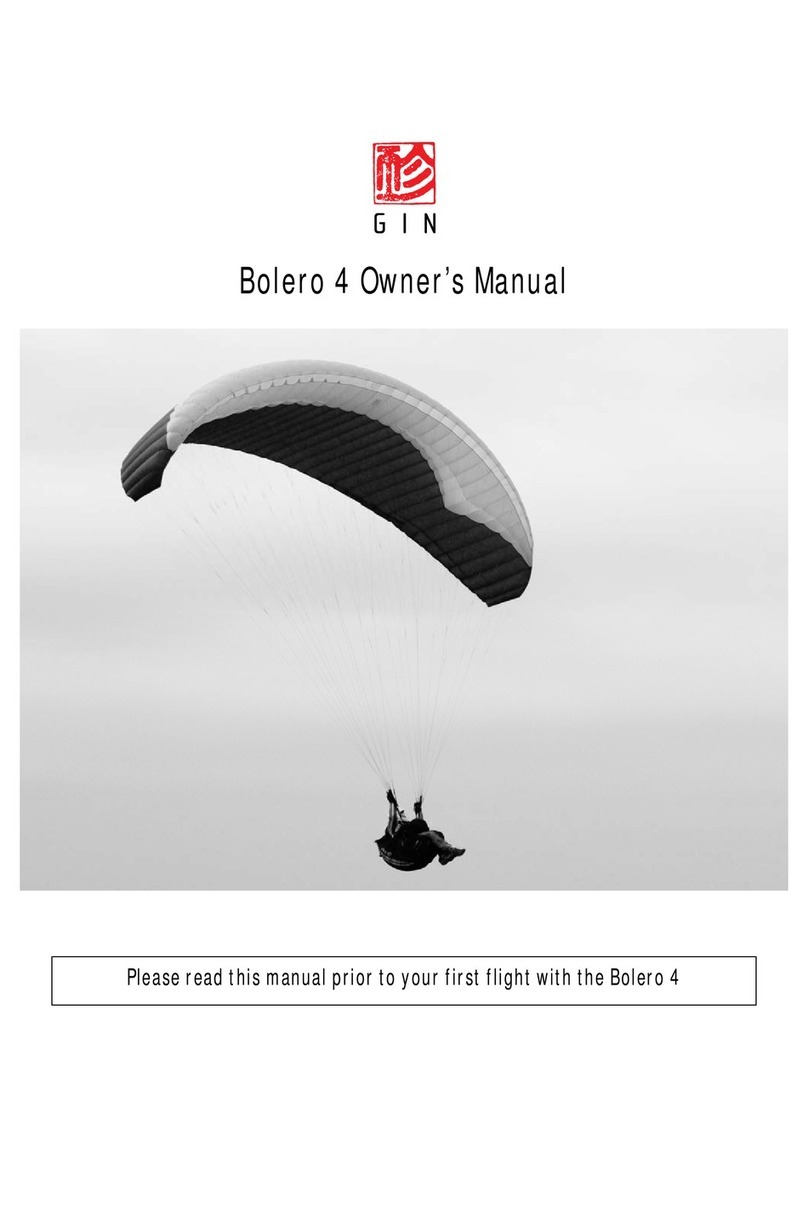
AEROPRAKT-22LS Pilot Operating Handbook A22LS-POH-04
4
6Performance................................................................................................................20
6.1 General .................................................................................................................20
6.2 Takeoff and landing distances...............................................................................20
6.3 Climb performance................................................................................................20
6.4 Cruise speeds and fuel consumption at various RPM settings..............................20
7Weight and Balance and Equipment List .................................................................21
7.1 Weight and Balance Chart ....................................................................................21
7.2 Installed equipment list..........................................................................................22
8Airplane and Systems Descriptions .........................................................................23
8.1 General .................................................................................................................23
8.2 Airframe.................................................................................................................23
8.3 Landing gear .........................................................................................................24
8.4 Engine and its controls..........................................................................................24
8.5 Propeller................................................................................................................24
8.6 Fuel system...........................................................................................................25
8.7 Airplane control systems .......................................................................................26
8.8 Instrument panel ...................................................................................................33
8.9 Full and static pressure system.............................................................................35
8.10 Electrical system ...................................................................................................35
8.11 Seats and harness belts........................................................................................40
8.12 Cockpit doors ........................................................................................................40
8.13 Baggage container ................................................................................................40
9Aircraft Ground Handling and Servicing ..................................................................41
9.1 Introduction ...........................................................................................................41
9.2 Towing, parking and tie-down instructions ............................................................41
9.3 Servicing fuel, oil and coolant................................................................................41
9.4 Approved fuel and oil ............................................................................................42
9.5 Cleaning and care .................................................................................................42
9.6 Disassembling and assembling the airplane .........................................................42
10 Supplements...............................................................................................................45
10.1 General .................................................................................................................45
10.2 Engine manual ......................................................................................................45
10.3 Avionics and special engine instruments ..............................................................45
10.4 Recovery system...................................................................................................45
10.5 Floats ....................................................................................................................45
10.6 List of installed equipment.....................................................................................46
10.7 Actual empty weight and CG position data............................................................47
10.8 Airplane Flight Training Supplement .....................................................................48
10.9 Airplane Owner Feedback to Manufacturer...........................................................51
10.10 Glider and banner towing.................................................................................52




















